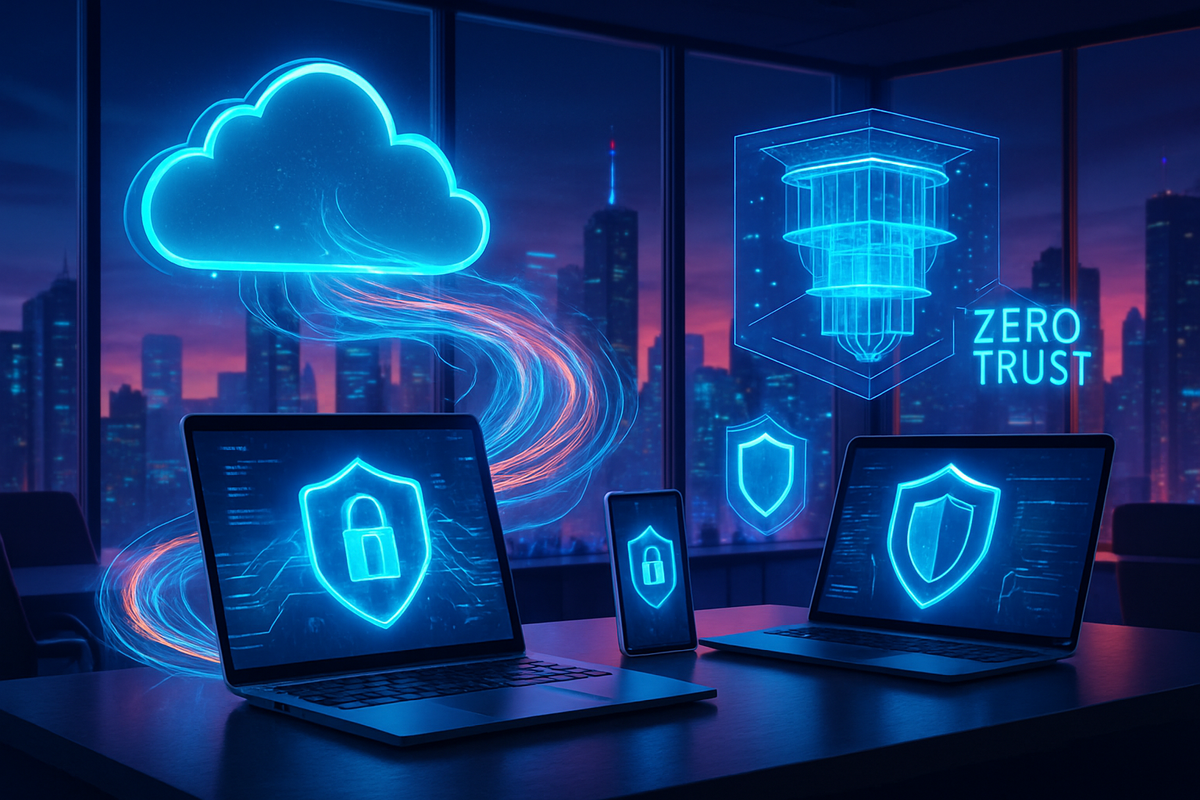Zero Trust for Everything: How AI and Quantum Tech Are Rewriting the Rules of Cybersecurity in 2025
Step into 2025's digital wild west where zero trust reigns supreme, AI is both savior and threat, and quantum computing reshapes security. Embrace a new strategy or get left behind in this seismic cybersecurity shift.

Welcome to Cybersecurity's Quantum Leap Year
2025 isn’t just another year in tech—it’s a digital wild west, where AI cowboys and quantum desperadoes duel over the fate of your data. Whether you’re a solo entrepreneur, a CISO, or someone who’s just tired of hearing about another breach on the news, you’re living through a seismic shift. Zero trust is the new sheriff in town, AI is both the deputy and the outlaw, and quantum computing is the mysterious gunslinger riding in from the horizon.
“Trust nothing, verify everything. And when in doubt, blame the algorithm—then check it twice.”
Zero Trust: Why It’s No Longer Optional
Once upon a time, cybersecurity was all about building bigger walls—firewalls, VPNs, you name it. But in 2025, the perimeter is as outdated as dial-up. Zero trust architecture (ZTA) flips the script: no user, device, or application is trusted by default. Everything and everyone must prove their identity, every time, everywhere.
- Continuous verification: Access isn’t a one-and-done deal. Devices and users are re-authenticated constantly.
- Least privilege: Users only get access to what they need—think of it as the ultimate "need to know" policy.
- Micro-segmentation: Networks are broken into tiny, manageable chunks, so even if someone gets in, they can’t roam free.
Why now? Because the old approach is crumbling. Firewalls and VPNs have become the very attack surface hackers exploit. With remote work, IoT, and cloud everywhere, zero trust isn’t just a buzzword—it’s a survival strategy [source].
AI: The Double-Edged Sword of Security
AI-powered attacks are faster, smarter, and sneakier than ever. Deepfakes, automated phishing, and AI-written malware are the new normal. But don’t despair—AI is also your best hope for defense:
- Threat detection: Machine learning spots suspicious patterns in real time, flagging attacks humans would miss.
- Automated response: AI can quarantine threats, block suspicious logins, and shut down compromised accounts in milliseconds.
- Zero trust enforcer: AI verifies identities, monitors behavior, and adapts security policies on the fly.
But beware: adversarial AI is a thing. Attackers use machine learning to probe your defenses, find vulnerabilities, and even trick your own security models.
“AI is your best friend—until it’s not. The only way to fight AI is with better AI and smarter humans.”
Quantum Computing: The Coming Encryption Apocalypse?
Quantum computers aren’t just science fiction anymore. By the end of this decade, they’ll be capable of cracking today’s most popular encryption methods—RSA, ECC, and more. That means:
- Old-school encryption may soon be as useful as a chocolate teapot.
- Quantum-safe algorithms (like lattice-based cryptography) are the new gold standard.
- Post-quantum migration is urgent for anyone storing sensitive data you’d like to keep private…well, ever.
Gartner predicts 30% of large enterprises will have quantum-safe cryptography strategies in place by the end of 2025. If you’re not thinking about this, you’re already behind.
Actionable Strategies: What You Can Do Right Now
- Adopt Zero Trust—Everywhere.
- Start by mapping your critical assets and users.
- Implement strong identity verification and multi-factor authentication—in every environment, not just the office.
- Segment your network and restrict lateral movement.
- Upgrade to Quantum-Safe Encryption.
- Audit your cryptography and plan for migration to quantum-resistant algorithms.
- Ask your vendors about their post-quantum roadmap.
- Leverage AI—But Stay Vigilant.
- Deploy AI-driven security tools for threat detection, but monitor for false positives and adversarial attacks.
- Invest in explainable AI solutions to keep your team in the loop [source].
- Secure the Expanding Edge.
- Every IoT device is a potential backdoor. Enforce zero trust at the device level and use real-time monitoring.
- Upskill Your Team.
- Invest in cybersecurity training—AI and automation can help, but human expertise is irreplaceable.
Top Tools and Solutions to Watch
Whether you’re a home user or running an enterprise, these categories are must-haves in 2025:
- Zero-trust platforms (e.g., Zscaler, CrowdStrike, Cloudflare Zero Trust)
- Quantum-safe encryption solutions (look for IBM Quantum and Microsoft Defender updates)
- AI-powered endpoint protection (Bitdefender, Acronis, Microsoft Defender)
- Consumer privacy tools (NordVPN, Dashlane for password management and VPN security)
- Real-time threat intelligence feeds (for IT pros: integrate with your SIEM or XDR stack)
Expert Perspectives: The Big Picture
Industry leaders agree: Zero trust isn’t a product, it’s a mindset. It requires cultural change, relentless verification, and constant adaptation. AI and quantum are rewriting the rules, but with the right blend of tech and human savvy, you can stay ahead of the curve.
“In cybersecurity, hope is not a strategy. Zero trust is.”
Ready to Stay Ahead? Join the Funaix Insider Community
Want more smart, actionable insights like this—plus the chance to discuss, debate, and share your own experiences? Only Funaix blog subscribers can read and write comments, so don’t miss out!
Subscribe for free now at Funaix Insider and become part of the smartest cybersecurity conversation on the web. (Psst…free for now. Don’t wait!)
Published: 08/07/2025
For more expert news and analysis, subscribe and join the Funaix community—where digital defense meets sharp conversation.




